
Australian Journal of Chemistry
Volume 65 Number 7 2012
RESEARCH FRONT: Dedication to Allan White

This issue is dedicated to Allan White on the occasion of his 75th birthday. It celebrates his contribution to Australian chemistry through his achievements in inorganic chemistry, and his extensive collaborations.
CH12190The Chemistry of Transition Metal Ethyne-1,2-diyl Complexes
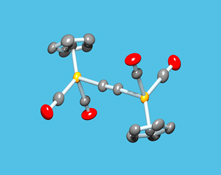
The chemistry and reactivity of ethyne-1,2-diyl compounds, LnM–CC–MLn, is reviewed. These complexes are simple analogues of organic alkynes, or dimetalloalkynes. Reactivity patterns mimic those of simple organic alkynes but have reactive M–C(sp) bonds that sometimes participate in the formation of multimetallic compounds with metal electrophiles.
CH11338 Reactions of Aniline with Copper(II) Compounds in Relation to the Formation of Copper-Polyaniline Composites
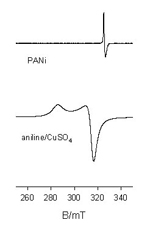
Reactions of aniline with a copper(ii) sulfate, chloride, or bromide in aqueous solution, yield copper(ii)-aniline complexes, in contrast to previously reported studies, which claimed the formation of copper-polyaniline composites.
CH11395 Synthesis and Structure of a Dimeric, Anionic Thioglycolate Derivative of Manganese Carbonyl
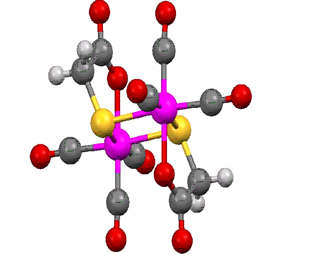
CH11447 Pendent Nucleophiles on Coordination Complexes: Hydrogen-Bond Donor and Acceptor Ability
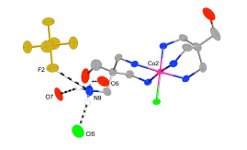
Analysis of the lattice contacts of pendent amine, ammonio, and hydroxy groups provides a means of assessing the influence of a proximal metal cation centre on their nucleophilicity and electrophilicity.
CH11503 Two-Dimensional Coordination Polymers in Rubidium and Caesium Complexes with Orthanilic Acid
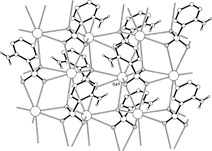
Rubidium and caesium orthanilates form chemically stable two-dimensional layered coordination polymeric structures based on stereochemically variable metal centres: six-, seven-, eight- and ten-coordinate in the rubidium complex and seven-coordinate in the caesium complex, these compounds representing rare examples of structurally characterized metal complexes with orthanilic acid.
CH11449 Axially Aligned Confinement of 1,4-Bis(triethylammoniomethyl)benzene by Two p-Sulfonatocalix[4]arenes
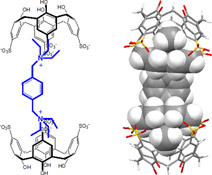
A multi-component bi-layer complex involving 1,4-bis(triethylammoniomethyl)benzene cation, p-sulfonatocalix[4]arene anion and phosphonium cation shows the preferential binding of the bis-triethylammonium cation in the cavity of two geometrically opposed calixarenes with the same molecular capsules persisting in solution.
CH11493Reactions of 7,7,8,8-Tetracyanoquinodimethane (TCNQ) with Alkynyl-Iron- and -Ruthenium Complexes: Synthesis of Ru{C=CC(CN)=C6H4=C(CN)2}(PPh3)2Cp, a New Donor–Acceptor Molecular Array
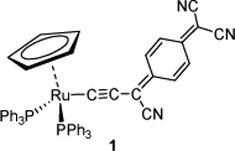
Organometallics with various donor–bridge–acceptor arrangements allow investigation of the key factors affecting the properties of these multifunctional molecular systems. Herein, reactions of 7,7,8,8-tetracyanoquinodimethane (TCNQ) with Fe(C≡CR)(dppe)Cp* and Ru(C≡CR)(PPh3)2Cp (R = H, Ph) are described. Formed are the mono-cation (by oxidation in the iron series), zwitterionic complexes, and complexes formed by regioselective [2 + 2]-cycloaddition and subsequent ring-opening reactions; elimination of HCN (in the ruthenium series) was also observed.
CH11510 Triosmium Clusters Containing 2-Mercaptobenzothiazolate Ligands

Reaction of the labile cluster [Os3(CO)10(NCMe)2] with 2,2′-benzothiazyl disulfide has been studied. Three new triosmium clusters have been synthesized and structurally characterized from this study.
CH11499 Crystal and Molecular Structure of 7-Diethylamino-[1′,3′,3′-trimethyl-4-((1,3,3-trimethyl-1,3-dihydro-2H-indole-2-ylidene)methyl)-1′,3,3′,4-tetrahydrospiro[chromene-2,2′-indole]]: A Dicondensation Product From the Reaction of 4-Diethylaminosalicylaldehyde with Fischer's Base

An X-ray crystallographic study using two different radiation wavelengths was performed on 7-diethylamino-[1',3′,3′-trimethyl-4-((1,3,3-trimethyl-1,3-dihydro-2H-indole-2-ylidene)methyl)-1',3,3′,4-tetrahydrospiro[chromene-2,2'-indole]] crystals obtained from the condensation of two molecules of Fischer’s base with 4-(dimethylamino)salicylaldehyde. No significant deviations between the final models were observed.
CH11468The Nature of Hydrogen Bonding Involving the Siloxane Group

Geometry, electron density, and electron localizability properties are used to clarify the nature of unusual hydrogen bonding to the siloxane linkage in a computational study. It is described how the basicity of the siloxane linkage can be significantly increased through variation of the Si–O–Si bond angle and how this is reflected in corresponding indicators of hydrogen bonding.
CH12021 The First Carbonyl-Substituted Derivative of [Mn2(CO)6(µ-pyS)2]

Reactions of Group 7 dinuclear complexes [M2(CO)6(μ-pyS)2] (M = Mn, Re) with (Ph3P)2Ni(CO)2 have been investigated.
CH12069Lanthanoid and Alkaline Earth Complexes Involving New Substituted Pyrazolates
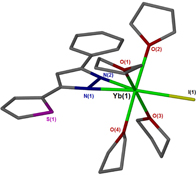
A range of alkaline earth and lanthanoid complexes involving new substituted pyrazolates of the type [M(pz)x(solv)y] were prepared. They were structurally and spectroscopically characterized. Also, the first transoid lanthanoid iodo pyrazolate complex, [LnII(pz)I(thf)4], was isolated.
CH12036Synthesis and Structural Studies of Tetrahedral [M(Ph2P(CH=CH)PPh2)2]BPh4 and [M(Ph2P(CH2)nPPh2)2]BPh4 (n = 2, 3) Complexes for M = Copper(I), Silver(I), and Gold(I)
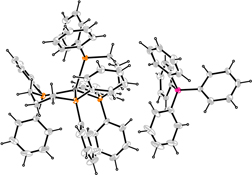
The 2 : 1 tetrahedral complexes of the bidentate diphosphine ligands cis-bis(diphenylphosphino)ethene (dppey), cis-bis(diphenylphosphino)ethane (dppe), and cis-bis(diphenylphosphino)propane (dppp) with copper(i), silver(i), and gold(i) have been synthesized as tetraphenylborate salts and characterized by NMR spectroscopy, electrospray mass spectrometry, and single crystal X-ray structure determinations at 200 K.
CH12031 Hydrated Lanthanoid Complexes of 5-(2′-Pyridyl)tetrazole Formed in the Presence of Dimethyl Sulfoxide
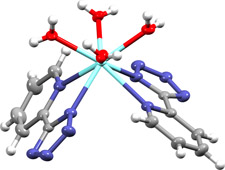
Lanthanoid complexes of 5-(2′-pyridyl)tetrazole are unexpectedly isolated as hydrates, despite being crystallized in the presence of dimethyl sulfoxide.
CH12044Synthesis, Solid-state Structures, Solution Behaviour and Catalysis Studies of Nickel Complexes of Bis(benzimidazolin-2-ylidene)pyridine Pincer Ligands

The solution behaviour of nickel complexes of bis(benzimidazolin-2-ylidene)pyridine pincer ligands suggests an equilibrium between four- and five-coordinate complexes.
CH12054 Organometallic Complexes for Non-Linear Optics. 51. Second- and Third-Order Non-Linear Optical Properties of Alkynylgold Complexes

Quadratic optical non-linearities of gold alkynyl complexes increase on π-system lengthening and on introduction of electron-releasing substituents on the π-bridge ring adjacent to the metal centre, while maximal values of the effective two-photon absorption cross-sections of 1,4-{(PCy3)Au(C≡C)}2C6H4 and {(PCy3)Au(C≡C-4-C6H4C≡C)}6C6 increase non-linearly on proceeding from linear complex to 6-fold-symmetric complex.
CH12045Synthesis and Coordination Chemistry of 2-(Di-2-pyridylamino)pyrimidine; Structural Aspects of Spin Crossover in an FeII Complex
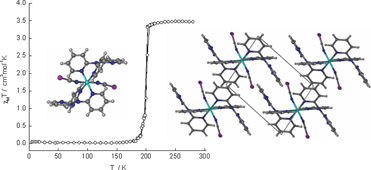
2-(Di-2-pyridylamino)pyrimidine forms mononuclear trans-[Fe(NCS)2(L)2], [Cu(L)2(H2O)](BF4)2·H2O and [PdCl2(L)] complexes, a dinuclear [(PdCl2)2(L)]·¾H2O complex, and a discrete [Ag2(L)4](PF6)2 metallomacrocycle. trans-[Fe(NCS)2(L)2] undergoes a temperature-dependent spin crossover, which was examined by magnetic and structural measurements.
CH12080Incommensurate Modulated Structures in the Ta2O5–Al2O3 System

The evolution of coordination geometries from pentagonal bipyramids to octahedra is caused by the modulation in (1 – x)Ta2O5·xAl2O3.
CH12058Copper(II) and Palladium(II) Complexes with Cytotoxic and Antibacterial Activity
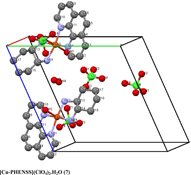
Eight square pyramidal copper complexes and four square planar palladium complexes with general structure [Cu(IL)(AL)H2O]2+, were synthesised. The crystal structures of [Cu-PHENSS](ClO4)2·H2O and [Cu-56MESS](ClO4)2·1.5H2O are reported. The copper complexes display some anticancer and antibacterial activity. The palladium complexes all have IC50 values of ~10 μM in the L1210 cell line and minimal antibacterial activity.
CH12052Iron(II) Mononuclear Materials Containing Functionalised Dipyridylamino-Substituted Triazine Ligands: Structure, Magnetism and Spin Crossover
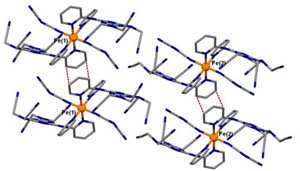
Members of a family of iron(II) complexes of a dipyridylamino-substituted triazine ligand (DTAC) of formula [Fe(DTAC)2(anion)2], display high-spin structural and magnetic features when anion = NCS and NCSe and spin-crossover behaviour when anion = N(CN)2 and NCBH3.
CH12042Bismuth(III) Thiobenzoates and their Activity against Helicobacter pylori
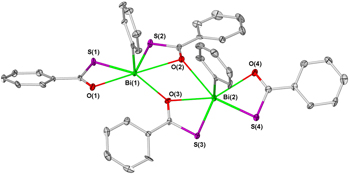
Six homo- and heteroleptic bismuth(iii) thiobenzoates of form Ph3-nBiLn (n = –3) have been synthesised by solvent-mediated and solvent-free methods. The structures of the compounds derived from thiobenzoic acid have been determined by X-ray crystallography. Bactericidal studies against three strains of Helicobacter pylori show a minimum inhibitory concentration of 6.25 µg mL–1 for all compounds, indicating that the high activity is independent of ligand type and degree of substitution at the Bi(iii) centre.
CH12032Weathered Ilmenite: Diverse Mechanisms of Sintering and Association with Contaminants
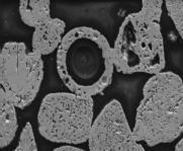
Extreme weathering breaks ilmenite, FeTiO3, into separate, surface-active oxyhydroxides that are prone to gather undesirable contaminants. However, in reduction kilns the most influential ‘contaminant’ may be water, which promotes reactivity and causes ilmenite grains to expand, sometimes to cenospheres. In complex ways, such ilmenite accumulates in unusable sinter.
CH12079Structure Correlation Study of the Beckmann Rearrangement: X-ray Structural Analysis and 13C–13C 1-Bond Coupling Constant Study of a Range of Cyclohexanone Oxime Derivatives
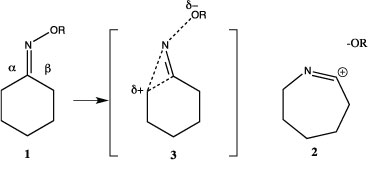
Structures of oxime derivatives of varying reactivity reveal distortions of bond distances and angles consistent with the early stages of the Beckmann rearrangement.
CH12100Linear Trinuclear Copper(II) Complexes Derived from the Nucleophilic Addition Products of Dicyanonitrosomethanide [C(CN)2(NO)]–: Syntheses, Structures, and Magnetic Properties
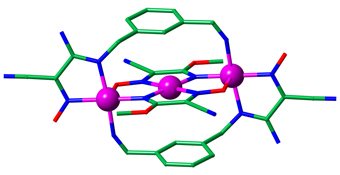
Two novel trinuclear CuII complexes have been synthesised from the nucleophilic addition derivatives of the small nitrile anion, dicyanonitrosomethanide (dcnm).
CH12145Copper(II) Complexes of Two New Pyridyl–Aliphatic Amine Ligands: Synthetic, Structural, EPR, and Magnetic Studies
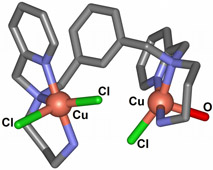
Two new polyamine ligands, L1 and L2, incorporating pyridyl and aliphatic amine donor sites yield the mono- and binuclear complexes [Cu(L1)](ClO4)2 (1) and [Cl2Cu(L2)CuCl(H2O)]ClO4 (2), respectively, in which the copper ions each exhibit distorted square pyramidal coordination; in binuclear 2 non-equivalent coordination behaviour is present at the individual copper sites.
CH12161Synthesis of Poly(2-Hydroxyethyl Methacrylate) Sponges via Activators Regenerated by Electron-transfer Atom-transfer Radical Polymerization
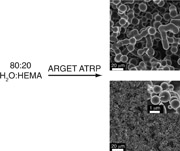
This communication describes the use of activators regenerated by electron-transfer atom-transfer radical polymerization to synthesize poly(2-hydroxyethyl methacrylate) sponges.
CH12183Novel Semiconducting Biomaterials Derived from a Proline Ester and Tetracyanoquinodimethane Identified by Handpicked Selection of Individual Crystals
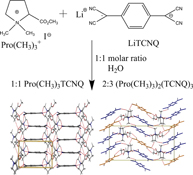
The reaction of N,N-dimethyl-d-proline-dimethylester (Pro(CH3)3+) with LiTCNQ (TCNQ = tetracyanoquinodimethane) in water resulted in a mixture of crystals, 1 : 1 [Pro(CH3)3TCNQ] and 2 : 3 ([(Pro(CH3)3)2(TCNQ)3]). Each crystal is analysed by X-ray, infrared, Raman and electrochemistry. The electrochemical method provides an exceptionally sensitive method of distinguishing differences in stoichiometry.



